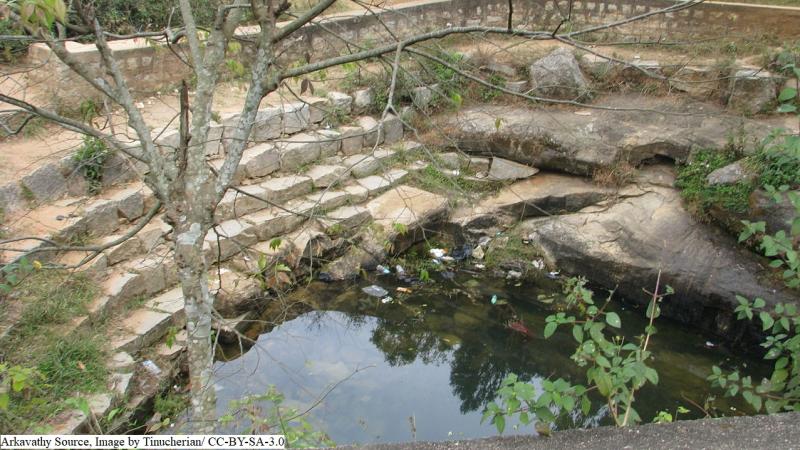
Agriculture, the backbone of the Indian economy, is a water-intensive activity. The numerous hunger strikes, protests and petitions from the farming community always have water at the centre of it. With water getting scarcer by the day, intelligent crop choices and sustainable irrigation methods although seem to be the obvious way forward, some farmers in the peri-urban regions of Bengaluru may not think so, reveals a new study.
The study, published in the journal Irrigation and Drainage, and carried out by researchers from the Ashoka Trust for Research in Ecology and the Environment (ATREE) finds that various factors affect the choice of crops by farmers and water usage in the Arkavathy river basin. The study finds that these choices depend on the proximity to urban areas, the economic status and caste of the farmer, non-agricultural employment opportunities in the vicinity and the incentives for water conservation.
The present study is part of a bigger, socio-hydrological research project that covers the Arkavathy and Noyyal sub-basins, both part of the larger Cauvery river basin. The areas around these two river basins are witnessing rapid urbanisation. The Arkavathy sub-basin has a catchment area of 4169 square kilometres with about 35% of Bangalore city falling in it. The study, conducted between 2012 and 2016, used a stratified random sample of 333 farmers from 15 villages.
“The Arkavathy sub-basin used to be the primary source of water for Bangalore until the 1970s before the city began to expand and depend on Cauvery for its water supply”, explains Dr Bejoy Thomas Fellow (Associate Professor), Convenor - Centre for Environment and Development, ATREE, who designed and led the study. However, the same region is now witnessing declining water levels and rampant water scarcity.
Local communities and decision makers blame the changing climate for the water woes in this region. However, the researchers of the study claim that the bad management of water resources is the real culprit. “The analysis of household and plot level survey data pertaining to drilled and non-functional borewells, the depth at which water was sighted, and changes in the cropping pattern between 1993 and 2013 shows that human-induced factors, including shift to eucalyptus plantations and groundwater pumping, were responsible for the water stress, which began to be felt since the mid 1990s”, says Dr Thomas.
The study uncovered interesting trends in the drilling of borewells and the choice of crops grown by the farmers of the region. Most borewells were found to be owned by wealthy, educated farmers belonging to the upper-caste and those living closer to the city. Those farmers without borewells depended on the rains for irrigation, and practised subsistence farming, or opted for employment in the non-agricultural sector, bidding goodbye to agriculture entirely.
The farmers who lived closer to the city and had borewells grew vegetables since it was easier to cater to the market demands of the urban area. Those who lived farther chose eucalyptus plantations as a lucrative option. The interesting point in these crop choices is that both are high on water consumption.
The study also reveals that only 37% of the farmers with irrigation facilities adopted drip irrigation. Drip irrigation, is an irrigation technique that allows water to drip slowly to the roots of the plants, is the most water-saving technique compared to others for irrigation. The government also provides a subsidy for the same. However, the farmers had other reasons to not adopting drip irrigation, according to the researchers. The drip technology is not suited for all crops grown in the region and the salt deposition, due to hard water, clogged the holes in the drippers, creating problems and discouraging its adoption.
Besides, although farmers were aware of the water problems, they were not concerned about water conservation. “The farmers are aware of the groundwater problem, but there are no sufficient incentives, concerning the prices or opportunities for them to conserve it”, argues Dr Thomas. Hence, most adopted a 'drill deeper and quit' strategy, where they would dig up deep borewells and abandon irrigated agriculture when water was insufficient.
The study indicates that farmers are not worried about resource sustainability in the short run since there are much better, income generation opportunities outside of agriculture. As a start, placing some regulations on the use of groundwater could help resource sustainability, they say. What could be a long-term solution? "Researchers, civil society groups, government departments and farmers should work together to reduce the impact of crop choices on water resources and make peri-urban agriculture an attractive livelihoods option", signs off Dr Thomas.






